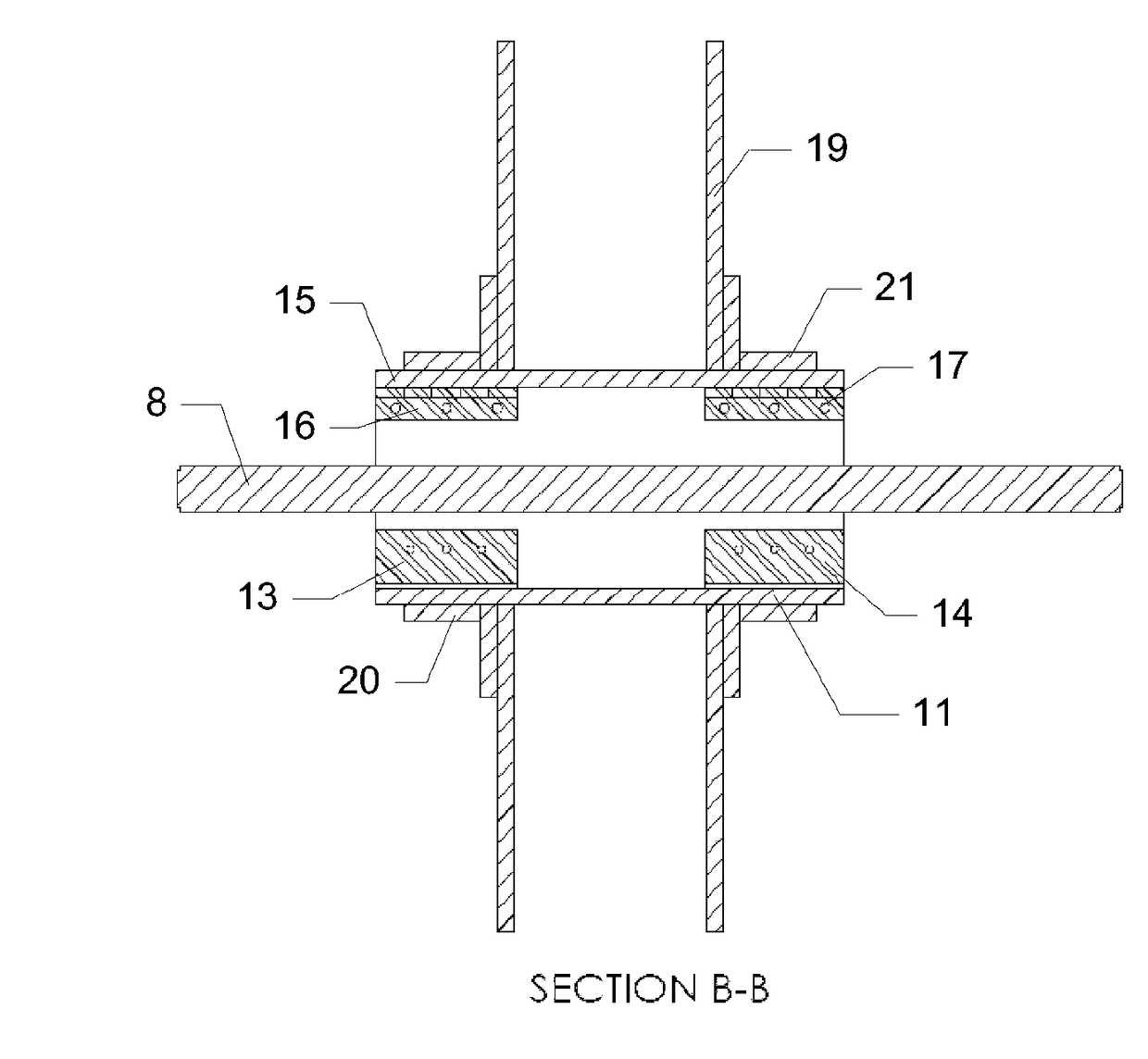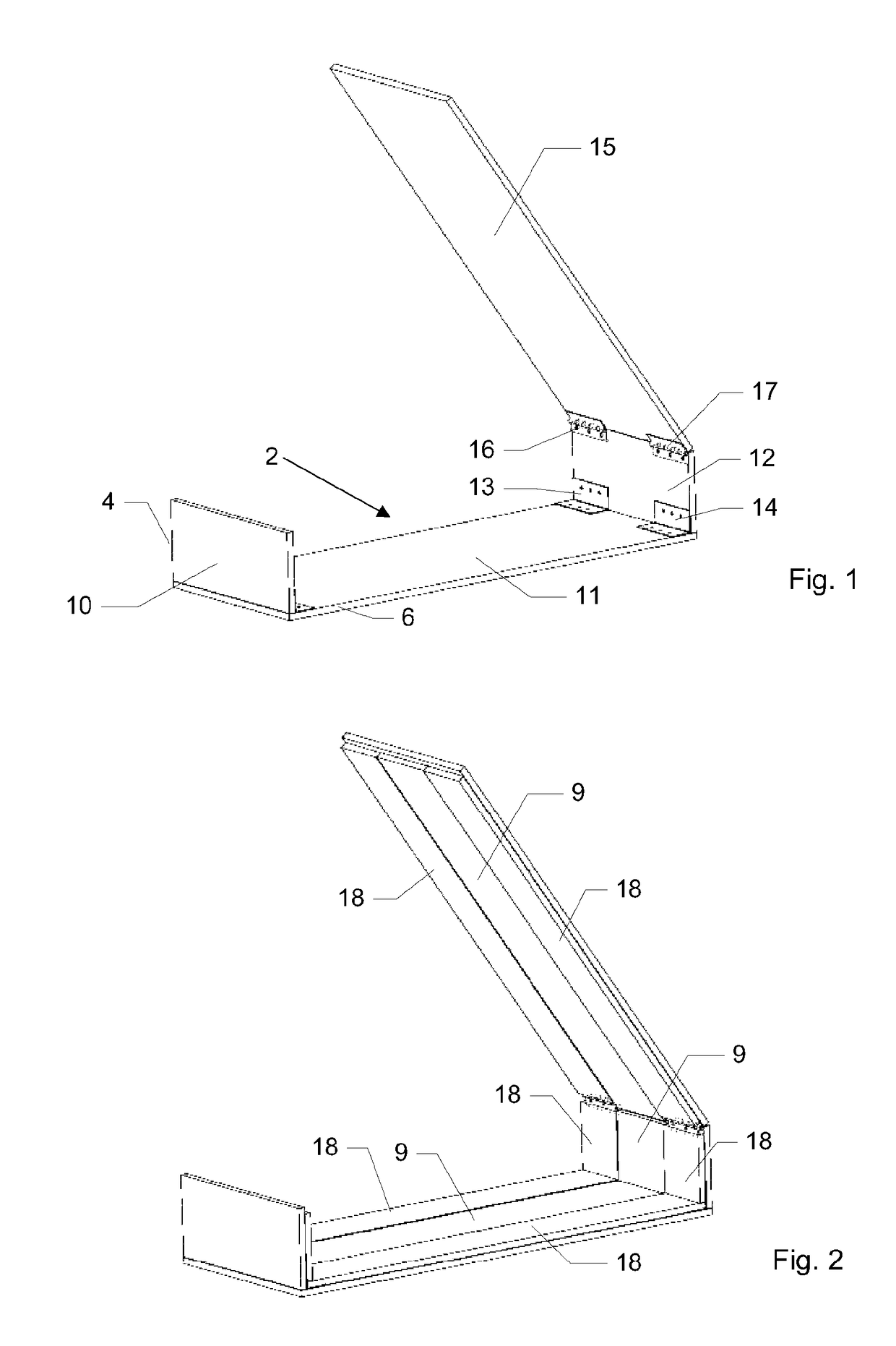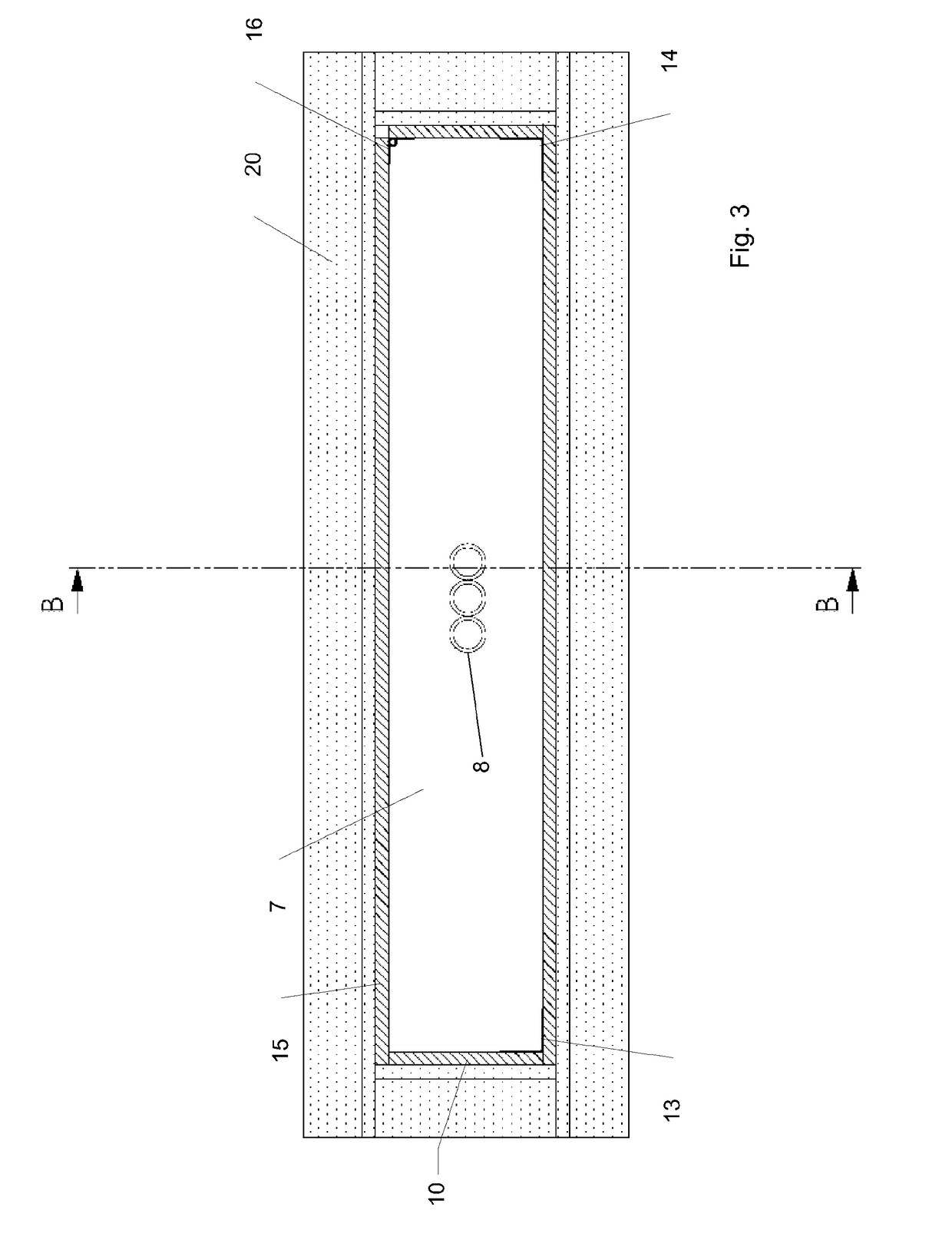Fire and smoke containment services transit unit and an associated method
a transit unit and fire containment technology, applied in electrical equipment, medical science, dental surgery, etc., can solve the problems of poor insulation performance and drawbacks of the approach, and achieve the effect of improving the insulation performance and reducing the risk of fir
- Summary
- Abstract
- Description
- Claims
- Application Information
AI Technical Summary
Benefits of technology
Problems solved by technology
Method used
Image
Examples
Embodiment Construction
[0037]Referring to the figures, the fire and smoke containment services transit unit 1 includes a casing 2, which is constructed from a material having a thermal conductivity of less than 5 watts per meter per Kelvin and more preferably less than 0.5 watts per meter per Kelvin. Examples of suitable materials include calcium silicate boards, such as Orbit FR Board, which has a thermal conductivity of approximately 0.137 watts per meter per Kelvin or Maxilite board, which has a thermal conductivity of approximately 0.14 watts per meter per Kelvin. Another example of a suitable material is Promatect H board, which has a thermal conductivity of approximately 0.242 W / m.K, as sold by Promat Australia Pty Ltd in Adelaide, South Australia. Further examples include Vermiclux and Supalux, which each have a conductivity of less than 5 W / m.K, or Monolux, which has a thermal conductivity of approximately 0.18 W / m.K, as sold by Intumex Asia Pacific in Northmead, NSW, Australia. Another example is...
PUM
 Login to View More
Login to View More Abstract
Description
Claims
Application Information
 Login to View More
Login to View More - R&D
- Intellectual Property
- Life Sciences
- Materials
- Tech Scout
- Unparalleled Data Quality
- Higher Quality Content
- 60% Fewer Hallucinations
Browse by: Latest US Patents, China's latest patents, Technical Efficacy Thesaurus, Application Domain, Technology Topic, Popular Technical Reports.
© 2025 PatSnap. All rights reserved.Legal|Privacy policy|Modern Slavery Act Transparency Statement|Sitemap|About US| Contact US: help@patsnap.com



